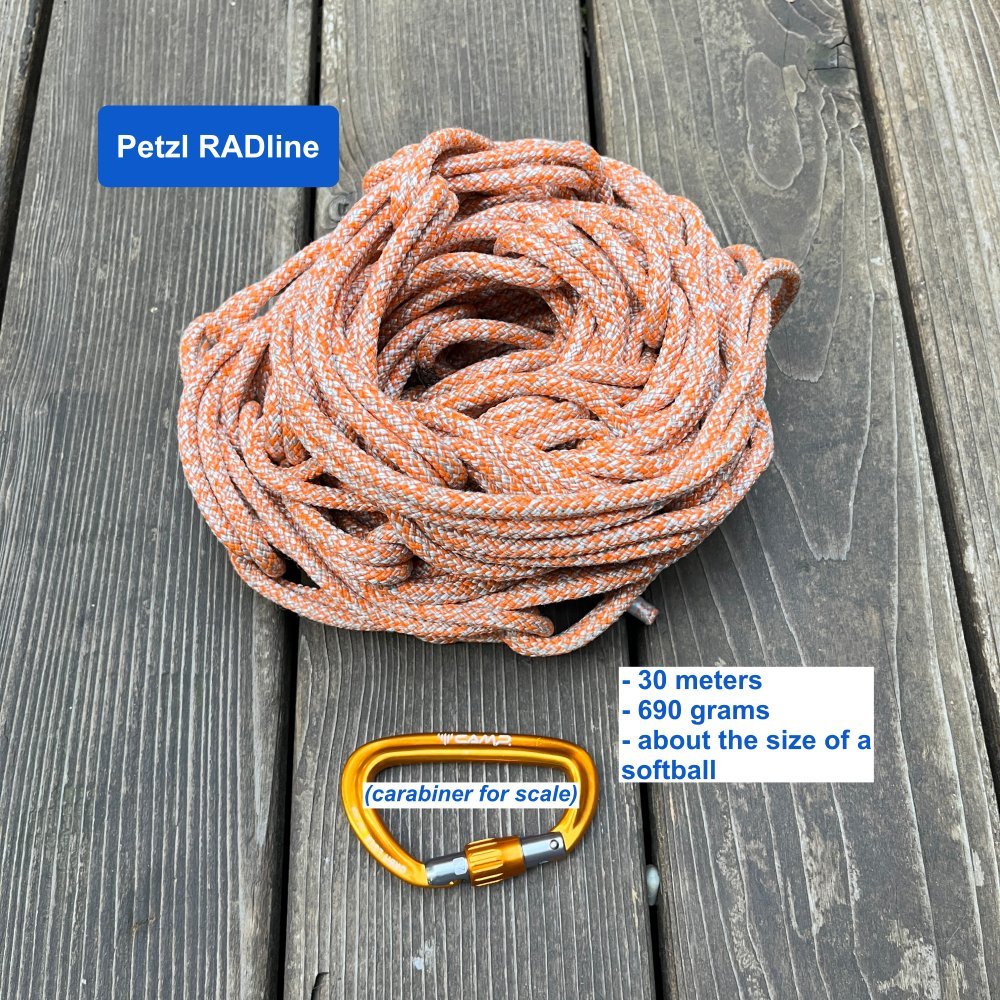Try a static rope for glacier travel
Are you climbing a low to moderately angled glacier? You need a rope for crevasse rescue only, but not for catching any real leader falls, and you don’t want to carry any more weight or length than you have to.
Consider a static rope. If your only purpose of the rope is for crevasse rescue, then you don’t need the dynamic qualities of a typical lead climbing rope. In fact, the extra stretch in a dynamic rope (especially the skinny ones) will result in a longer fall and will add unwanted stretch to any raising system you may need to build. Conversely, the static rope can give a harder yank on the people up top if the rope management is a little sloppy, with extra slack, so keep that in mind.
These ropes can be up to 40% lighter than a similar length of 8 mm dynamic half rope, typically used in glacier travel by many climbers. (Approx 25 grams per meter compared to about 40 grams per meter.)
Of course, you need to take some measures to add extra friction when rappelling, such as using a device designed for skinny ropes such as the ATC Alpine Guide, adding two carabiners to your belay loop, or maybe even putting both strands of the rappel rope through the SAME hole in your rappel device. As always, practice with these in a controlled environment before you have to do it for real on the mountain.
Several companies offer dry treated, small diameter, ultralight static ropes specifically designed for crevasse rescue.
The Petzl RAD system, an complete kit designed specifically for crevasse rescue, uses very low stretch 6mm static rope. (“RAD” stands for “Rescue And Descent”, for you acronym people.)
The Petzl RADline can be purchased separate from the above mentioned system. I have a long article about this rope, read it here.
Mammut makes a 6mm dry treated Glacier Cord, also a static rope designed for crevasse rescue. This rope has a middle mark and comes with a nice storage bag, which can be used for a clean toss when you need to rappel.
These ropes (usually) play nicely with tiny ascenders and progress capturing pulleys, such as the Petzl Tibloc, Petzl Micro Traxion and the Edelrid Spoc, tools which can simplify the crevasse rescue process.
These specialized ropes typically have a Dyneema core, giving them minimal stretch, light weight, and nice strength, typically about 14 kN. Another benefit is that they absorbs basically zero water, making them lightweight when dragging through snow.
Be careful with your friction knots. You may need use triple wrap prusiks made from skinny 5 mm cord to be sure your friction knots hold on the narrow diameter line.
Read some great gear reviews for these ropes, and a lot more gear, at Black Sheep Adventure Sports.
Here's a quote on this topic from “The Mountain Guide Manual” by Marc Chauvin and Rob Coppolillo (pg 243):
“Because of all the dynamic aspects to a crevasse fall - climbers sliding on the snow surface and the rope and bending over and cutting into the lip - it is becoming acceptable to use static rope.
In fact, Petzl has conducted tests that suggested the spring/rebound nature of a dynamic rope actually makes it more difficult to stop a fall.” If you want to get into the test results, here’s a link to the Petzel website which discusses them.
Here’s a bit of Youtube chat about the topic with another pro guide:
This tip is mentioned "The Mountain Guide Manual" by Marc Chauvin and Rob Coppolillo, and "The Mountaineering Handbook" by Craig Connally.
(This is not an affiliate marketing link, I am offering you these links as a convenience to you and because these books are great.)




